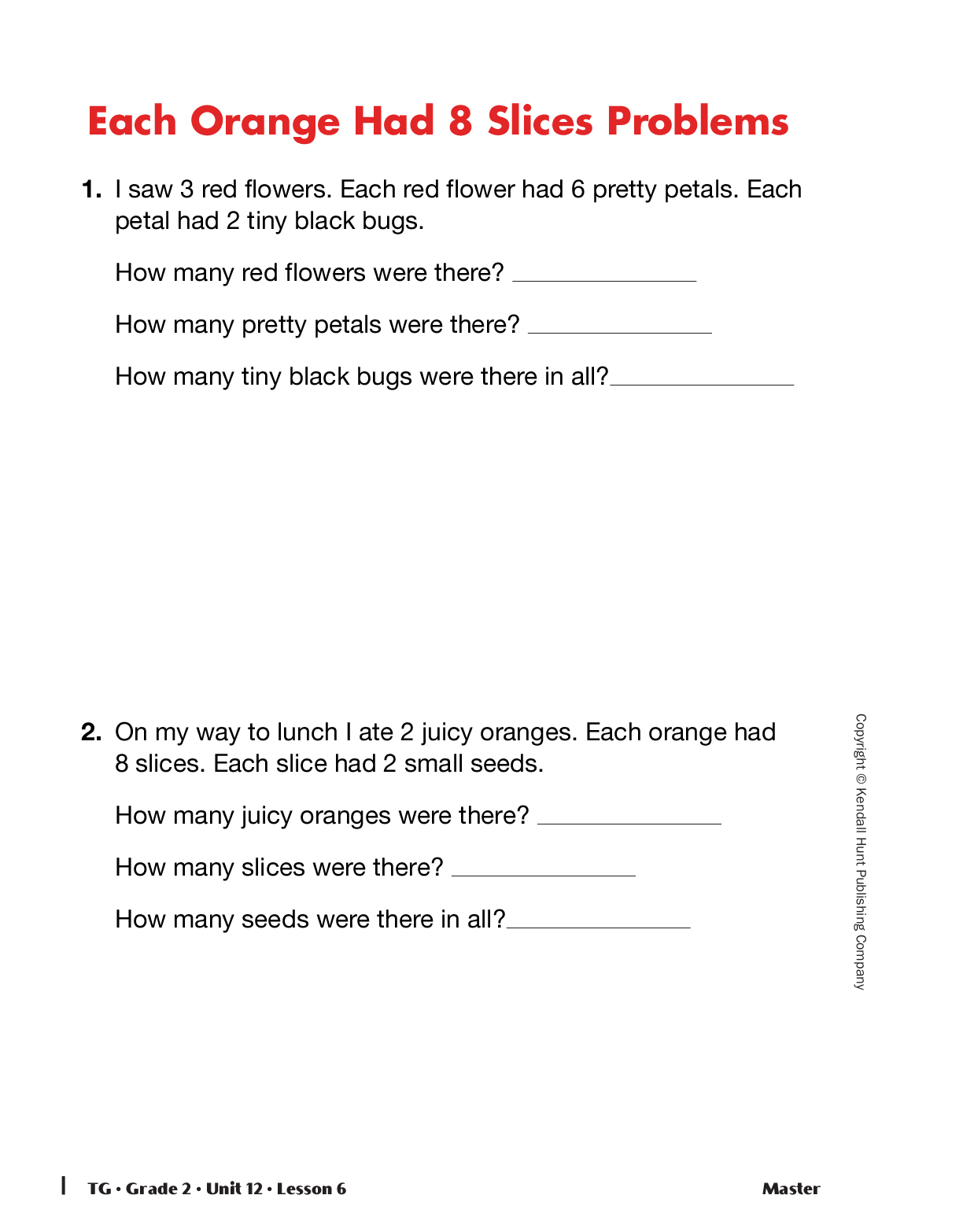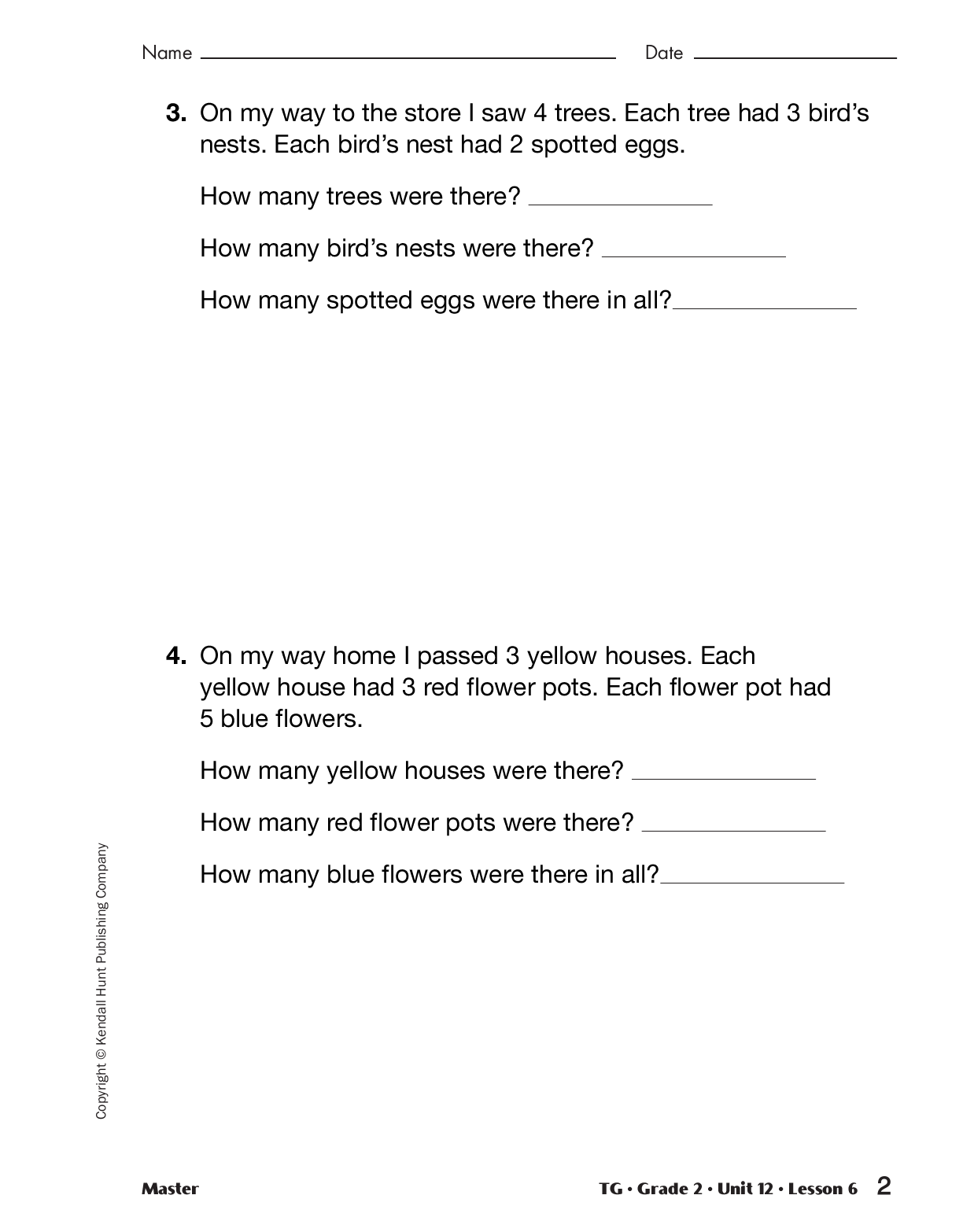Write and Solve Problems
Est. Class Sessions: 2Developing the Lesson
Part 2: Each Orange Had 8 Slices
Read aloud the book Each Orange Had 8 Slices by Paul Giganti, Jr.,. Explain that the story is told from a child’s point of view. As students listen to the story, encourage them to visualize the number of things the character sees in each place. Tell them to see if they notice any patterns.
After reading the story, ask:
Guide students to recognize that in each setting, the author repeats the same format. He presents three elements to be multiplied or counted (using the pictures) and asks three questions. Each question begins with the words “How many.”
Display the Each Orange Had 8 Slices Problems Master.
Read the first problem aloud as students see the problem displayed:
Ask students to work with a partner to solve the problem. Students can display their solutions on the Master. Provide colored pencils or markers so that students can draw pictures that explain their solutions on the Master. Then have partners solve the remaining problems on the Master and continue to discuss students’ solutions.















